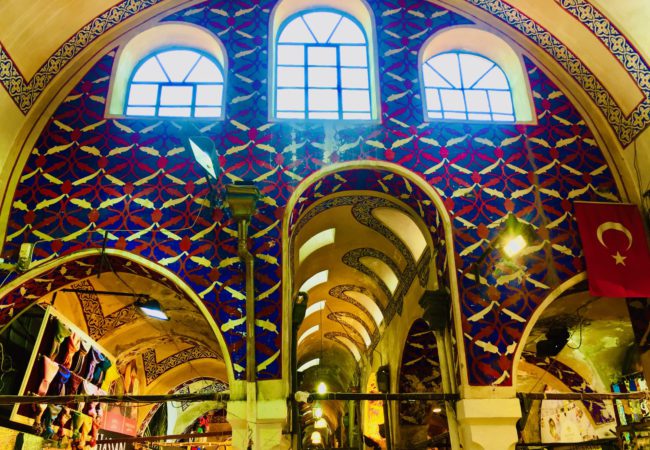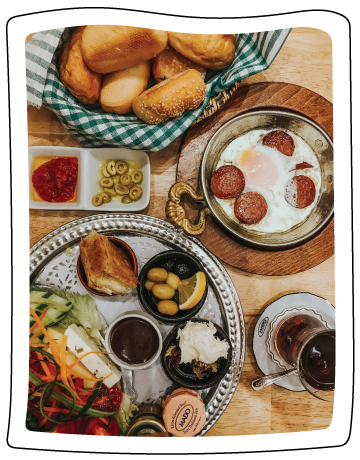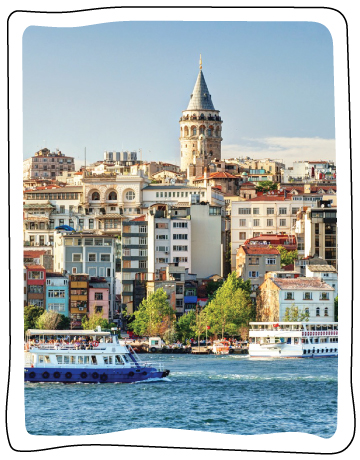Friendly disclaimer! We want to be as accurate as possible, but given these challenging times, we urge you to recheck that the venues are open when you decide to travel.
The chaotic and lively magic of the markets has always beckoned me on my travels. It’s where I can melt into the crowds and observe local life, as it unfolds through its sights, smells, and sounds. The animated exchange of goods and gossip provide a free, front-seat view of the local culture of a city. And in Istanbul, a hearty slice of local life thrives in its many markets.
But first, a quick lesson in history. Erstwhile Constantinople was the centre of the Christian world. In the centuries before the Ottoman Turks conquered it and renamed it Istanbul, it was the western terminus of the fabled network of the Silk Routes. This legendary city that straddles the Bosporus, with its natural harbour, known today as the Golden Horn, set the right conditions to control trade from the Black Sea into the Aegean. Modern-day Istanbul emerges from the ashes of the grandeur of the great Ottoman empire. The reminders of this greatness are to be seen everywhere – in the palaces, on the banks of its river, in its decaying mansions, in its unforgettable mosque dotted skyline…and yes, in the frenzy of its glorious old bazaars.
Nowhere else is the return to the way of life of the silk route cities more palpable than in the narrow lanes of its markets. Ignore the ubiquitous Chinese goods (ironically, not the pure Chinese silk variety that gave the Silk Road its name!) that sit shoulder to shoulder with Turkish kilims woven using ancient traditions. With some imagination, you can catch glimpses of what life in the Ottoman markets must have entailed; aided by an archway, a window, or a melancholic smile. Istanbul’s markets remain the beating heart of the city’s trading past, and here is a guide to a few of them.
The grandest bazaar of them all
Prepare to be a(maze)d by this shopping paradise of 50,000+ square feet, with nearly 4000 shops spread over 60 streets. This is the grand old lady of bazaars, commissioned by an equally grand man – Fatih Sultan Mehmet (Mehmed the Conqueror). The Grand Bazaar or Kapalı Çarşı is one of the biggest covered markets in the world.
A word of advice. If you have the luxury of time, enter through one of the 11 gates and proceed to lose yourself in the labyrinth that is the Grand Bazaar. Let your senses (the most important of them being the gut), lead you on a historical adventure to the core of present-day bazaar life. On the way you will encounter alleyways with traditional soap sellers, tea kiosks, stores selling ceramics, textile, silk, lamps (all arranged for you to capture your prettiest shot!), kilims, spices and nuts, traditional metalware, jewellery, and more. And yes, those magic-obstructing stores that sell rip-offs galore.
Be warned, you’re entering the territory of touts. With humour as your armour, politely decline what you do not wish to purchase, and keep walking!
Take a break at a café and over a Turkish coffee, or any other of your choice, indulge in some people watching. Also, don’t forget to pause and admire the Ottoman styled faucets and water fountains. And most importantly, look up. Literally up, at the vaulted ceilings and painted arches, peeling to reveal a glimpse of the bazaar’s magnificent past.
Streets are grouped according to what they sell – goldsmiths, jewellers, knife makers, helmet makers, gun makers, carpet makers, and so on – a tradition that dates back to Ottoman times. So, if you tire of mindless meandering, ask one of the storekeepers to guide you to the street of the goods you’re after.
Look out for the gorgeous and unique Turkish coffee pots, called Ibrik or Cezve, to take back home. Some of the things I purchased at the bazaar were ceramics, traditional soaps in tins with Ottoman inspired designs, Hamam style traditional bath gloves, Turkish tea, a cushion made of a piece of kilim, a Turkish lamp, and an Ibrik to call my very own!
Unravelog tip: If Ottoman antiques are what you’re after, head to the antique shops, located in İç Bedesten. Şalabi Antiques has been at the bazaar since 1880, so you are assured of the authenticity of its products. Its collection includes vintage jewellery, mirrors, snuff-boxes, and Ottoman tools for a special table setup. Epoque is another trusted antique shop where you will find iconography with defaced surfaces, old Turkish rings studded with emeralds and vintage pocket watches. Check out the delightful Minyatür’s Nautical Instruments. Their collection ranges from historical maps, globes, and compasses, to obsolete diving equipment perfect for display.

Sugar and spice and all that’s nice
There’s so much more to spices from this region other than the ubiquitous (albeit delicious) red-berried Sumac. Jostle your way under the beautiful arches of the Spice Bazaar and you will be greeted by colourful domes of spices, that range from the familiar to the unacquainted.
History has it that during the time of the silk route trades, the ‘Cairo caravan’ would bring spices from Egypt, as Istanbul lies in the path between the East and Europe. Mısır Çarsısi or ‘The Egyptian market’, is the other name for the Spice Bazaar. It was built over 400 years ago as an extension of the new mosque in Eminönü, supposedly from the duty paid by Egyptian imports.
Though originally the bazaar stocked only spices, today it offers other Turkish treats like honeycombs, Turkish delight, dried fruit, Turkish cheese, and caviar – apart from a lot of non-treats such as cheap trinkets and souvenirs.
This is the right and ripe place to expand your culinary palette, to acquaint yourself with some typical Turkish spices and local food. Some of my favourites are Nar Eksisi, a thick sticky syrup made of pomegranate (a fantastic substitute for balsamic vinegar), Pul Biber, dried red pepper flakes in varying degrees of heat, Isot Biber, a smoky variety of the red pepper flakes, and Corek, or Nigella seeds in English, to sprinkle on home-baked goodies.

An Anatolian culinary carnival of fresh and organic produce
Rub shoulders with the local foodies at the Inebolu Sunday Market, located in the Kasimpaşa district. The market has been around since the 19th century, and locals and tourists can buy goods coming in from Inebolu, located in the Black Sea region of Turkey. As dawn breaks, sellers from the region arrive in Istanbul laden with the freshest and finest organic produce. Several restaurants source their produce from this market too.
You can look forward to mouth-watering treats – chunky slabs of cornbread, foraged mushrooms, a bushel of fragrant herbs, thick pastes and purees, crates of eggs, bright flowers, splitting sacks of grain, walnuts and hazelnuts and bins of glistening olives.
Inebolu shuts shop early, at 4 pm.
Unravelog Tip: Get to the Inebolu Sunday Market early, feast your senses on the spread, grab some fresh produce (bread, fruit, jams, cheese, honey…), and then, head over to the historical Gülhane Park, to breakfast under trees that date back to the 1800s!






